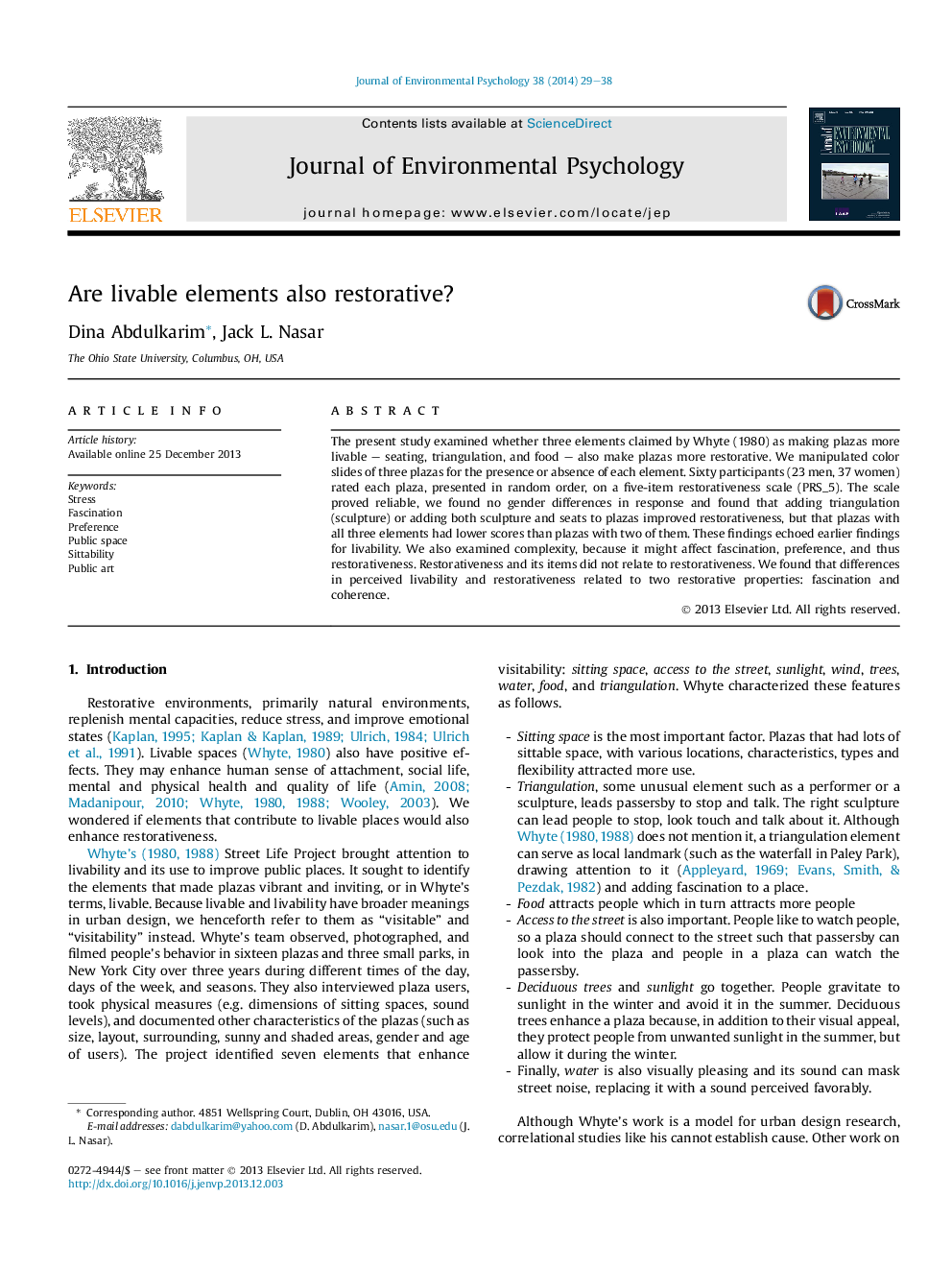| Article ID | Journal | Published Year | Pages | File Type |
|---|---|---|---|---|
| 7246295 | Journal of Environmental Psychology | 2014 | 10 Pages |
Abstract
The present study examined whether three elements claimed by Whyte (1980) as making plazas more livable - seating, triangulation, and food - also make plazas more restorative. We manipulated color slides of three plazas for the presence or absence of each element. Sixty participants (23 men, 37 women) rated each plaza, presented in random order, on a five-item restorativeness scale (PRS_5). The scale proved reliable, we found no gender differences in response and found that adding triangulation (sculpture) or adding both sculpture and seats to plazas improved restorativeness, but that plazas with all three elements had lower scores than plazas with two of them. These findings echoed earlier findings for livability. We also examined complexity, because it might affect fascination, preference, and thus restorativeness. Restorativeness and its items did not relate to restorativeness. We found that differences in perceived livability and restorativeness related to two restorative properties: fascination and coherence.
Related Topics
Social Sciences and Humanities
Psychology
Applied Psychology
Authors
Dina Abdulkarim, Jack L. Nasar,
